Wild Flowers - Blue or Lilac
Some of our wild flowers are blue or lilac, and most of those shown here are fairly common although some have very short flowering periods.
Bugle
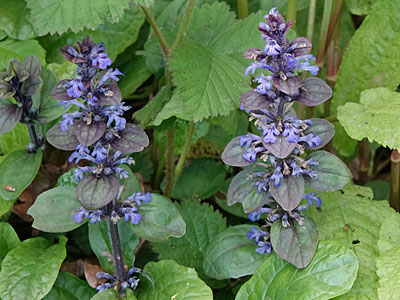
A short plant, often found in woods, with blue flowers that generally appear in April and May.
Speedwelll
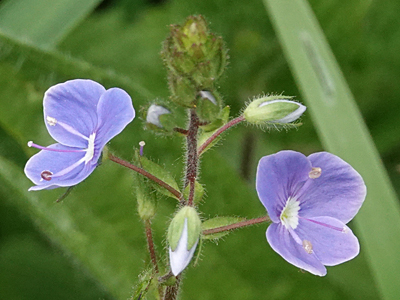
Germander Speedwell is the most common of several similar species and flowers from April until June.
Bluebell
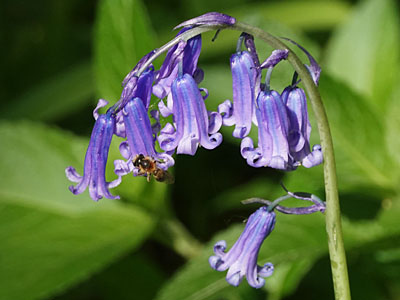
Some of our woods are carpeted with English Bluebells in April, May and June.
Ground Ivy
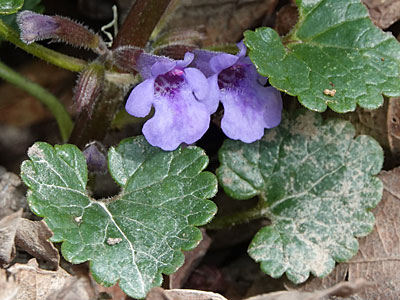
A widespread plant with creeping stems that grows in woods and hedgerows and flowers all year round.
Forget-me-not
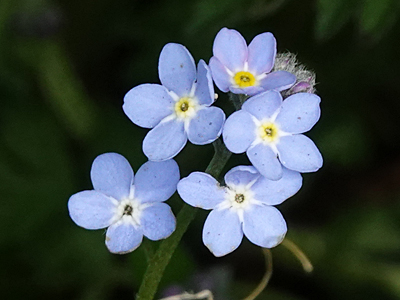
Field Forget-me-not is the most common of several species and flowers from April until June.
Green Alkanet

Similar to Forget-me-not but with a darker blue flower with a white centre and distinctive leaves. Flowers from April until June.
Dog-violet
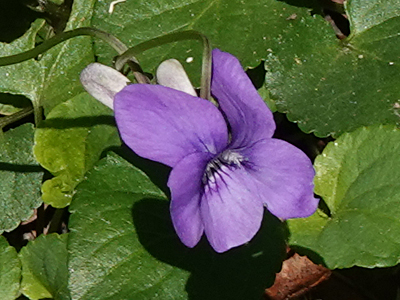
Very common in woodlands and along the old railway track, Common dog violet has a pale spur. Early Dog-violet has a spur that is darker than the petals. Both flower from March until May.
Selfheal
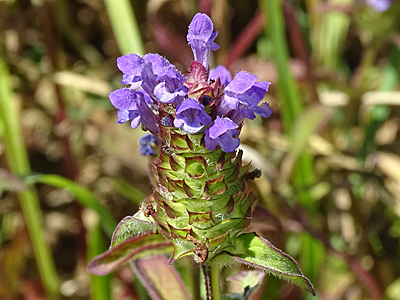
A creeping plant that is found in grassy places, even lawns, flowering from April until June.
Chicory
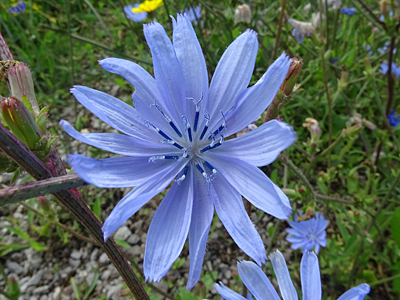
Found near the Discovery Centre and the water treatment plant. Flowers from June until September but the flowers only open on sunny mornings.
Bush Vetch
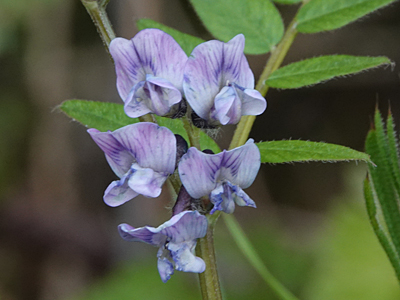
This vetch has pale lilac flowers, in groups of 2 to 6, from April until October. It has a scrambling habit in grass and hedgerows.
More Information
The Botanical Society of Britain & Ireland has a page with links to books, websites and downloadable files to help you identify wild plants.
A useful free guide was produced by the National Plant Monitoring Scheme.
A useful book is “Collins complete guide to British Wild Flowers”.
Photos on this page by Peter Hunnisett

